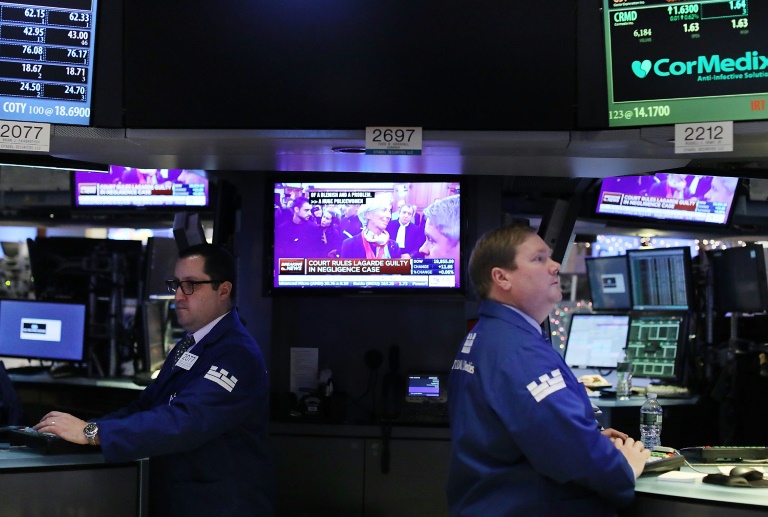As the Dali slid out of its berth at the Port of Baltimore in the early hours of March 26, it wasn’t alone.
A pair of 5,000-horsepower tugboats guided the massive container ship into the deep channel in the Patapsco River, pointing it toward the Chesapeake Bay as it began its voyage to Sri Lanka. Then, off they went, according to maritime tracking data.
If they’d still been with the ship or close by, the tugs may have averted the ensuing disaster, as the Dali apparently lost power and drifted into a bridge support, toppling the Francis Scott Key Bridge, killing six road workers, two of whom have yet to be found.
There is no policy requiring tugboats to escort ships like the Dali beneath the Key Bridge, the largest obstacle for a ship navigating the Patapsco outbound into the bay, a bit more than 2 nautical miles from the terminal.
The typical practice for tugboat escorts at the Port of Baltimore, as at many other U.S. ports, is governed by agreements between key stakeholders, rather than formal policy. According to the Maryland Port Administration, decisions are made by ship’s captains and the Maryland pilots who board cargo vessels to guide them into and out of port.
Still, the fact that the Dali didn’t have a tugboat escort until it passed the bridge came as a surprise to some maritime experts.
“It makes no sense that that tug escort would be abandoned before she exited the critical area of the port, which is the bridge,” said maritime attorney Hugh “Skip” Lambert, of New Orleans.
But industry representatives said preventing crashes like the Dali’s cannot be solved simply by throwing extra tugboats at ships moving through ports across the nation, a solution that would be onerous, unnecessary and could drive container traffic away from more restrictive ports.
“It’s not like: ‘Oh, man, maybe we need two more tugs, three more tugs, four more tugs. Well, now nobody’s going to come to your port,” said Jennifer Carpenter, president and CEO of the American Waterways Operators, a trade organization representing the tugboat, towboat and barge industry.
The cost of tug escorts is part of the calculus, said Jeffrey Slesinger, a longtime tug captain who now trains mariners through his company Delphi Maritime, based in Edmonds, Washington.
“The analogy is this: Why don’t we have pedestrian lights at every street crossing in the U.S.? Why isn’t there a walk-don’t walk sign at every intersection we have?” Slesinger said.
The cost should be weighed against the risk — and the potential price of catastrophe, he said.
“The technology is there,” he said. “It’s a political and environmental balance, between using that technology and the expense that’s incurred by it, and the risk of whatever that vessel is either carrying or the risk of where it’s traveling.”
Ports would do well to conduct comprehensive safety assessments, and hopefully the Key Bridge disaster sparks those evaluations, Carpenter said. Tugboats are not the silver bullet, but rather one potential improvement, alongside beefing up protection for bridges and other infrastructure, she said.
These sorts of evaluations must be updated periodically, as changes in vessel traffic and vessel size alter the threat level. Any changes should happen port by port, Carpenter said, rather than through a blanket policy, given geographic, tidal and traffic differences between harbors. Often, organizations such as “harbor safety committees” discuss a port’s tug practices, but pilots play a leading role, she said.
The Maryland Association of Pilots did not respond to requests for comment for this article. McAllister Towing, the owner of the two tugboats that escorted the Dali from the pier to the channel, declined to comment.
Following the Key Bridge collapse, those conversations have begun already, said former merchant mariner Sal Mercogliano.
“It changed things that day, I can tell you that much,” he said. “There were discussions going on in ports that day.”
When the Key Bridge is rebuilt, it’s possible the policy in Baltimore changes. For the time being, large, deep-draft vessels like container ships must use two tugboat escorts as they pass through the temporary channel beside the wreckage, which opened for a few days starting Thursday, per an order from the Coast Guard’s Captain of the Port.
Any permanent change also likely would come from the Coast Guard, said Richard Scher, spokesman for the Maryland Port Administration. Baltimore has a harbor safety committee, which includes representatives from the Association of Maryland Pilots, the Coast Guard, police, the Army Corps of Engineers and others. But Scher said he is not aware of the committee discussing tugboat best practices for the Port of Baltimore.
The efficacy of tugboats was on full display less than two weeks after the Key Bridge collapsed, when another massive container ship, the APL Qingdao, lost propulsion in the Kill Van Kull Channel, which separates New York and New Jersey, on its way to the Verrazano-Narrows Bridge. When emergency struck, the vessel already had tugs attached, a “routine safety measure” that is common practice for the waterway approaching the bridge, according to the Coast Guard.
To be sure, the situation aboard the Qingdao wasn’t as dire as the circumstances aboard the Dali on March 26, when the ship apparently lost power, affecting not only its propulsion systems, but others as well. The Qingdao also was farther from the Verrazano-Narrows, which connects the New York boroughs of Staten Island and Brooklyn, when its propulsion systems failed.
For the crew of the Dali, power loss came at precisely the wrong moment, said retired Navy Capt. Lawrence Brennan, an attorney who teaches maritime law at Fordham Law School. The pilot on board the Dali issued a last-ditch request for tugboats as the ship drifted toward the Key Bridge, but it was too late.
“They were just too close,” he said. “I don’t know if assisting tugs would have been able to make a difference. They certainly wouldn’t have harmed the situation, if they were able to assist. But it’s geography and speed, time, distance — and fortuity.”
Slesinger said he has no doubt that, if there had been a properly equipped escort tug still attached to the Dali when it lost power in the Patapsco, it most likely would have saved the Key Bridge.
Modern tugs are “purpose-built,” he said, as opposed to the multipurpose vessels that dominated in the 1970s and ’80s. They’re more powerful and agile, specially designed to escort cargo vessels many times their size.
From the “escort position,” tugboats tethered to the stern of cargo ships exert steering and braking forces on ships like the Dali, Slesinger said.
For the U.S. tugboat industry, the Key Bridge collapse could have ripple effects similar to the Exxon Valdez oil spill in 1989, Slesinger said.
“It has the potential to be that kind of a game-changer,” Slesinger said.
That incident, considered among the worst environmental disasters in U.S. history, saw 11 million gallons of oil spilled into Alaska’s Prince William Sound after an oil tanker ran aground. It spawned the Oil Pollution Prevention Act of 1990, and the requirement that two tugboats accompany oil tankers exiting the Sound.
But past U.S. bridge collapses caused by vessel crashes haven’t spurred that level of transformative change, Slesinger said.
In 2002, Oklahoma’s Interstate 40 bridge was struck by a barge and plunged into the Arkansas River, killing 14 people and injuring 11.
“It raised awareness, people were talking about bridge infrastructure: ‘We gotta fix this.’ The industry, American Waterways Operators, they did some best practice stuff,” Slesinger said. “But it never went much beyond that. It never really got into the big political arena.”
The difference very well could be the video footage, which shows the Key Bridge dropping span by span into the river, mere moments after it was struck: a proud highway one second and a mangled wreck the next.
“That bridge just immediately collapsed,” Slesinger said. “That will burn itself into many people’s minds. And then they’ll be like: ‘How did this happen?’”
Baltimore Sun reporter Alex Mann contributed to this article.







